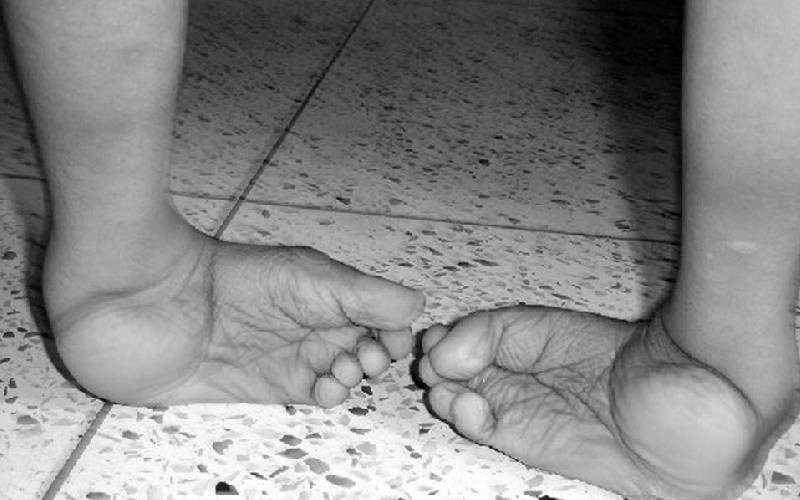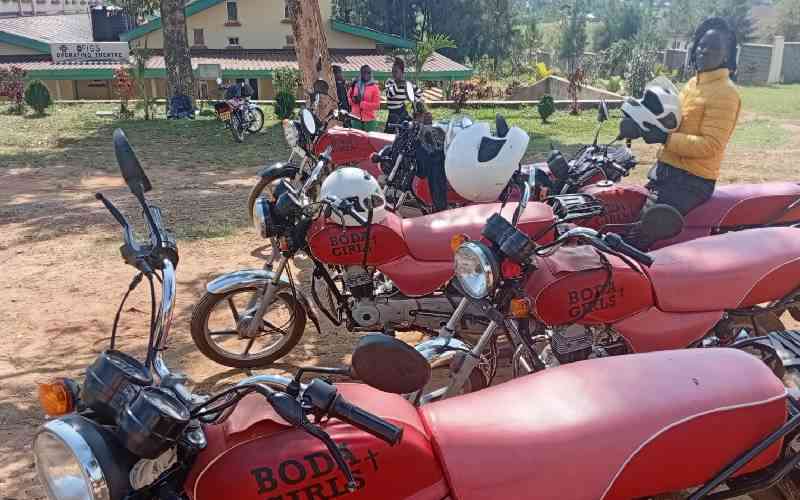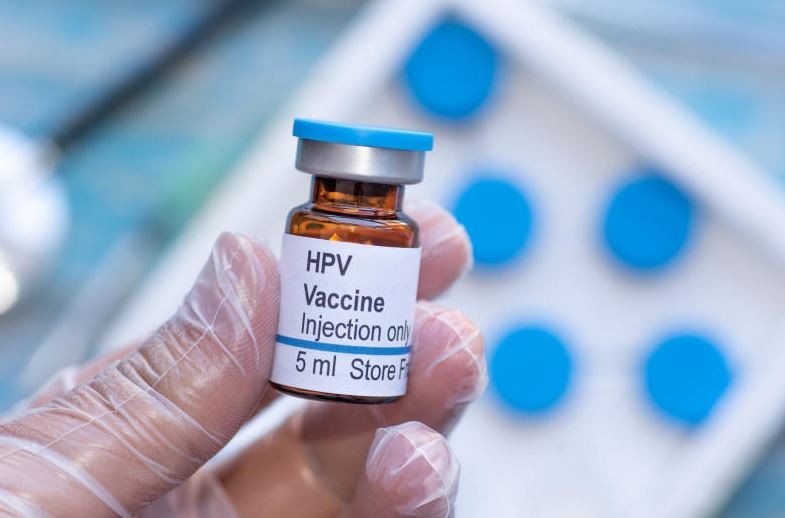
Mark Ole Elpa, a 33-year-old theologian born and raised in Eldoret, narrowly escaped a tragic fate in his early childhood. Just eight years after his birth in 1992, he was nearly forgotten, not by accident, but by intent. It was only through the desperate intervention of his younger brother and concerned neighbours, who pleaded with his mother, that his life was spared.
Imagine the heartbreak of knowing that your own mother, the very person who gave you life, once attempted to end it. Her reason? The overwhelming pressure from a community that stigmatised disability. She could not bear the shame of raising a child who was born differently abled.
For most children, the early years are defined by love, security, and the comforting presence of parents or close relatives. When they fall, argue with friends, or get hurt, their instinct is to run to mother or father, the people they trust the most.
But for Elpa, this safety never existed. His story took a very different path. He owes his life to neighbours and his younger sibling, strangers, essentially, who recognised his humanity and his right to live, despite his disability. Their courage saved him from the cruel fate that awaited him.
“My journey with clubfoot... Well, I was born with a clubfoot disorder. In our culture, any child born with a disability was seen as a curse or an outcast. My parents considered me a burden. My mother even tried to drown me in a well. I was only saved because my younger brother and some neighbours intervened,” Elpa recalls.
Tears fill Elpa’s eyes as he reflects on the painful journey he has endured over the past 33 years. Growing up was far from easy. The way people talked about him, the way they looked at him, it broke his heart. Every time he compared himself to other children, his self-esteem sank. He watched them wear shiny new shoes, but no pair ever fit his twisted legs.
“I always felt different. Some people used to mock me, calling me ‘kiwete amekuja na ngumi na miguu’, meaning ‘the crippled one with fists for feet.’ It tore me down emotionally. I didn’t like walking or being near people who were ‘normal.’ But eventually, I accepted myself and started to enjoy life. I used to tell myself, ‘Mark, it’s better to be physically disabled than spiritually disabled.’ That gave me a new kind of confidence,” he says, his voice steady.
He says it deeply hurt him when other children in school made fun of his walking style, mocking him to his face, asking why he didn’t walk like them, and why his legs looked the way they did.
However, after enduring all this, escaping death and enduring stigma, his smile was partially restored by Cure International in Kijabe. He can now play football after undergoing several corrective surgeries.
His left leg was transformed after two corrective surgeries, but unfortunately, the right one remained the same to date. “At eight years old, I underwent my first corrective surgery at Kijabe Hospital. This followed lengthy counselling sessions with the doctor. Afterwards, I was given special shoes, used a wheelchair for three months, then crutches for six months. Eventually, I was able to walk unaided and now I wear normal shoes,” he states, a smile lighting up his face.
He encourages parents who have children with clubfoot to be thankful for the opportunity of being parents, and to embrace it, even if their children are differently abled, noting that the condition is not a death sentence and is, in fact, treatable.
For Absalom Liselo, a father of two and a resident of Huruma Estate, the story began with what seemed like a joyful phone call from his wife, a call that carried life-changing news.
He recalls that on October 1, 2021, he had just reported to a new job when he received a heartwarming message from his wife. She informed him that she had successfully delivered a healthy baby boy. As a father, he was overjoyed to welcome their second child into the world.
But shortly after, she called again, this time with a different tone. In a low and uncertain voice, she explained that while the baby was otherwise healthy, his left foot appeared to be folded inwards.
Liselo rushed to the hospital to see his wife and newborn son. He wanted to understand what was happening and whether the condition could be treated, as he had no prior knowledge of it. The only time he had ever seen anything related to the condition was from posters on the wall of Pumwani Hospital, when his wife had given birth to their first child.
“I wanted to know more about the condition. After my wife was discharged, I approached a doctor at a hospital I won’t name. I’m not sure if he was even qualified, but the response he gave me really broke my heart,” Liselo says.
“He told me, ‘Your wife didn’t take prenatal drugs, so you’ll just have to live with the condition.’ That statement crushed me,” he recounts.
Despite the disheartening response, Liselo’s curiosity and concern weren’t silenced. He remembered a friend who was a doctor at another hospital and quickly reached out to him. This time, he was given a message of hope.
His friend reassured him that the condition, known as clubfoot, was treatable, especially if intervention started early. Without hesitation, Liselo began the journey to seek medical care for his son.
“On the third day after my son, Gift, was born, I took him to Kenyatta National Hospital (KNH), as we had been referred there by the facility where my wife gave birth. At KNH, we received counselling, and I felt like a weight had been lifted from my shoulders. The doctors examined my son and applied a plaster cast on his affected leg. They told me to bring him back for a follow-up after one week,” he recalls.
This casting process was repeated three times. Afterwards, the doctors recommended that Gift wear special clubfoot shoes, as his leg was responding well to treatment. The shoes were to be worn at all times, except when massaging the foot, as instructed by the paediatrician.
After two months of steady progress, the clinic visits were reduced to once every two weeks instead of weekly. “I ensured that my son never missed a single clinic visit. I wanted to see him fully healed, not just for his health, but also to silence the neighbours who were spreading rumours about his condition. I believe they acted out of ignorance, not malice,” Liselo says.
Today, Gift is three and a half years old. He goes to school, plays with other children, and takes part in physical activities just like his peers. His leg is now straight. However, Liselo continues to take him for regular follow-ups, as advised by doctors, until he turns five.
Dr Ondiege, a consultant prosthetist orthotist and head of the Orthopaedic Technology Department at Kenyatta National Hospital, has been instrumental in shaping clubfoot treatment in Kenya. He has spent years training orthopaedic surgeons not to perform surgery on young children’s feet, but instead to adopt conservative treatment methods, particularly the Ponseti method. “Remember, I was training surgeons not to do surgery, and they are trained to operate. So, it’s not easy. You have to show them with facts why our young feet should not be subjected to the knife. Once you cut the foot and it recurs, it becomes more difficult to treat,” he explains.
Dr Ondiege emphasises that clubfoot has a tendency to recur, which is why he discourages surgical intervention. Scarring from surgery can hinder the ability of tendons to stretch, reducing the effectiveness of future treatment if the condition returns.
He adds that at KNH, conservative clubfoot treatment is provided at no cost. He urges parents to take their affected children for treatment early.
“Our goal is to ensure no child walks with untreated or delayed clubfoot. We want all children to walk, be economically productive, climb, work, and live without being a burden to their families,” he stresses.
Dr Ondiege clarifies that the cause of clubfoot is not scientifically proven, but it remains the second most common disabling condition among children after cerebral palsy.
He also debunks common myths, including the belief that the condition is caused by mothers not attending antenatal clinics, not taking prenatal vitamins, or wearing tight clothes during pregnancy.
There are two types of clubfoot: idiopathic (present at birth with no known cause) and syndromic (part of larger medical conditions, such as spina bifida, arthrogryposis, or other genetic/neuromuscular disorders).
He notes that clubfoot is more prevalent in boys than girls, with a ratio of 2:1, and that for every 1,000 live births, one child is born with the condition.
 The Standard Group Plc is a multi-media organization with investments in media
platforms spanning newspaper print
operations, television, radio broadcasting, digital and online services. The
Standard Group is recognized as a
leading multi-media house in Kenya with a key influence in matters of national
and international interest.
The Standard Group Plc is a multi-media organization with investments in media
platforms spanning newspaper print
operations, television, radio broadcasting, digital and online services. The
Standard Group is recognized as a
leading multi-media house in Kenya with a key influence in matters of national
and international interest.











